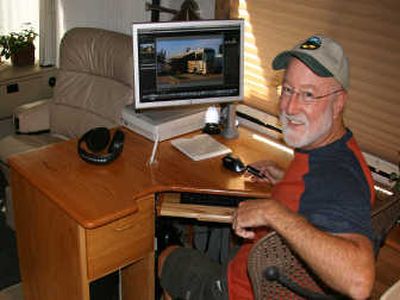RVs ride both highways

Back in 1995, Chuck Woodbury was about as connected as any RV guy could be. In his camper was his Mac laptop and a modem he used to connect to an AOL account. He’d stop different places and struggle to find a phone line to connect and check his e-mail.
“I’d go up to campground owners and ask if I could use a phone line for the modem,” said Woodbury, who runs an online RV magazine based in Edmonds. “They’d look at me like I was crazy. They thought I might run up some kind of giant long-distance bill.”
Today about 30 million people call themselves regular RV users. And the number of them being connected and staying connected has continued to grow. Like nearly any other electronic toy, computers keep getting smaller, less expensive and fairly easy to take along in a motor home or camper.
Depending on how far afield you plan to roam, the choices for how to get and stay connected vary. Here’s a checklist to prepare for hitting the road and staying connected:
Laptop or PC?
The choice varies with personal preference. Many people enjoy a laptop, as it gives them the choice of connecting inside a camper or RV, or taking it into an Internet café.
Others like the higher performance or ease of use of a desktop machine.
Satellite RV
If you’re the type to roam and still want to stay connected, the surest system is an RV Internet satellite dish system. This is also the most expensive route.
Even the simplest system runs about $1,800 to buy, not counting the monthly satellite connection fee (which averages about $65). The higher end systems, which are attached to the top of a vehicle, can cost $5,000 or more.
The upside: Dishes will find a satellite to link to nearly anywhere. The downside: apart from the cost, there’s the setup and maintenance. The lower-end systems involve a tripod dish that has to be hauled out of the RV and placed and aimed at a dish.
Former Seattle residents Diane Melde and Bill Joyce, now both retired from Microsoft and full-time RVers, use a tripod dish system and consider it a reliable way to check their financial sites and stay in touch with other family members.
They’re adept at knowing how to park their RV for good access to a satellite. “When we camp in a park, we have to be careful not to be surrounded by too many trees or it won’t work,” said Melde.
The WiFi route
For folks who just need to get connected when they find themselves parked at a campground or rolling through a city, the better and less expensive option is relying on wireless Internet connections (or WiFi).
WiFi is now widely found at many U.S. RV campgrounds, said Michael S. Fousie, who travels in his RV full time after retiring in January as a cameraman for KAYU-TV in Portland.
“If you’re going to be driving through campgrounds and towns, it’s easier to just rely on WiFi,” said Fousie.
Outside the back roads and campgrounds, WiFi has become nearly universal. In many areas, like downtown Spokane, it’s totally free. In many areas there may be a fee but it’s usually not expensive.
Not all WiFi signals are created equal, however. You will discover, roaming around, that some wireless signals are barely acceptable, connecting you at speeds just barely above old dial-up modem levels.
Air cards (or cellular modem)
When satellite tech is too complex and WiFi may not fit the bill, the best middle-ground option is using a cellular modem or air card technology. The formal term for cards that connect your PC or Mac through your cell-phone network is EVDO (evolution-data optimized).
Many road travelers like Woodbury, who edits his magazine RVTravel from all over the map, find that an air card puts him on the Web at near-broadband speeds consistently and without muss or fuss.
Woodbury said he’s driven down the entire Pacific coast using a Verizon EVDO card and nearly always had high data speeds.
Such cards range in price from about $30 on up to $200, depending on manufacturer.
Then you have to pay your cell provider an additional monthly data-plan fee. For Verizon or Spint-Nextel customers, the all-you-can-eat data plans run about $60 a month.
If you buy a lower-priced monthly plan but exceed the data limit, extra costs will be tacked on.
And some parts of the country are not fully built-out for EVDO; Sprint-Nextel cards will drop back to dial-up speeds in most sections of Montana and Wyoming. Company service technician Haris Alijagic said the company is preparing to upgrade service in those areas before long.
Driving into Mexico or Canada, the same speed drop-off occurs, said Alijagic. At that point your network connection is considered a roaming call; each carrier sets certain rates for the amount of data you use in cell-roaming mode. Travelers need to be prepared for those charges, said Alijagic.